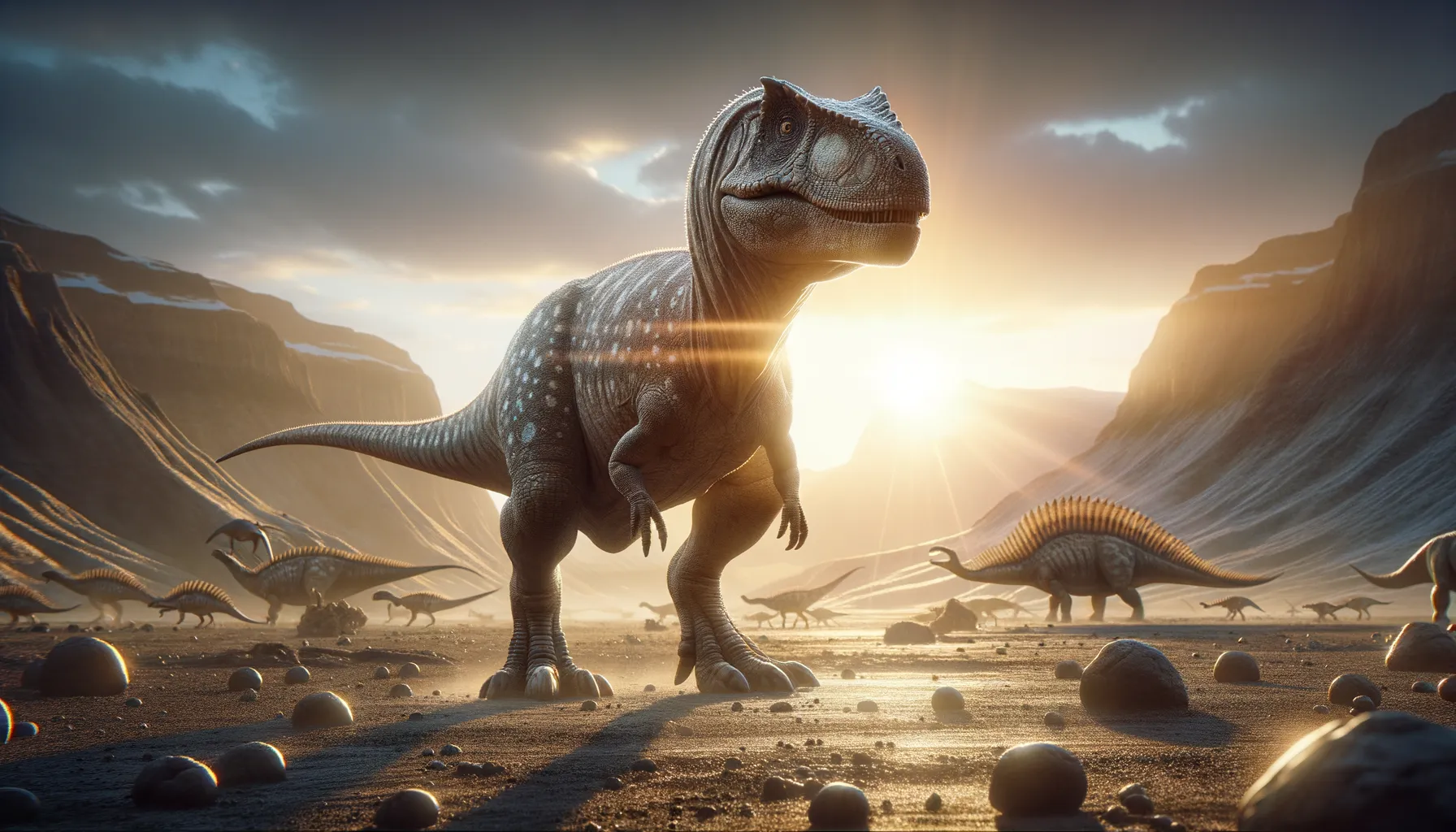
Hanssuesia
Armored survivor of the ancient world.
Period
Cretaceous
Length
Roughly 5 meters long.
Height
Approximately 1.2 meters tall.
Weight
About 1000 to 1500 kilograms.
Hanssuesia was a small armored dinosaur that roamed the earth during the Late Cretaceous period. It was known for its distinctive dome-shaped skull, which likely served as a protective feature as well as a display attribute. This dinosaur inhabited regions that are now part of North America and lived alongside a variety of other dinosaur species. Paleontologists study Hanssuesia to better understand the diversity and evolution of ankylosaurs.
Diet
Hanssuesia was herbivorous, feeding primarily on low-lying vegetation. It likely consumed ferns, cycads, and other prehistoric plants using its small, beaked mouth. Its diet required efficient processing of fibrous plant material.
Hunting
As a herbivore, Hanssuesia did not engage in hunting activities. Instead, it foraged for plants, which were abundant in its environment. Its survival strategy focused on finding food rather than hunting prey.
Environmental challenges
Hanssuesia faced environmental changes such as shifting climates and the emergence of new plant species. These changes influenced its feeding habits and survival strategies. Predators posed a constant threat, requiring its defensive adaptations, like its armored plates and domed skull, for protection.
Speed
Slow-moving but well-armored.
Lifespan
Estimated at 20 to 30 years.
First discovery
Discovered in Alberta, Canada, in the 1970s.
Fun Facts
- Hanssuesia is named after Dr. Hans-Dieter Sues, a renowned paleontologist.
- It belonged to a group of dome-headed dinosaurs known as pachycephalosaurs.
- Hanssuesia lived during the Late Cretaceous Period, about 75 million years ago.
- This dinosaur was relatively small, estimated to be around 2 meters in length.
- The thick skull dome of Hanssuesia was probably used for head-butting contests.
- Fossils of Hanssuesia have been found in what is now Alberta, Canada.
- Despite its fierce-looking head, Hanssuesia was a plant-eater.
Growth and Development
Hanssuesia likely experienced a moderate growth rate, reaching full size over a span of several years. Juveniles had to develop their protective features quickly to survive against predators. Studies of its bone structure indicate it had a robust build optimized for defense.
Habitat
Hanssuesia inhabited woodlands and floodplains, areas rich in vegetation and water sources. These environments provided ample food and shelter from predators. Seasonal changes in these habitats influenced its migratory and foraging behaviors.
Interaction with other species
Hanssuesia coexisted with other herbivorous and carnivorous dinosaurs. It likely competed with other herbivores for food resources. While predominantly solitary, Hanssuesia might have used its armored body as a deterrent when interacting with potential threats.
Natural lifespan
Naturally, Hanssuesia lived around 20 to 30 years.
Reproduction
Hanssuesia reproduced by laying eggs, like other dinosaurs. Nests were likely made in secluded areas to protect the eggs from predators. Parental care might have been limited as hatchlings were relatively independent once born.
Social behaviour
Hanssuesia was likely solitary or lived in small groups. Social interactions were minimal, focused mainly on feeding areas and during mating seasons. Its social behavior centered around territoriality and resource competition.
Fossil locations
Fossils of Hanssuesia have been primarily found in Canada, particularly in Alberta. This region has provided numerous ankylosaur fossils, helping paleontologists piece together its ecological role. These discoveries have been crucial in mapping its historical distribution.
